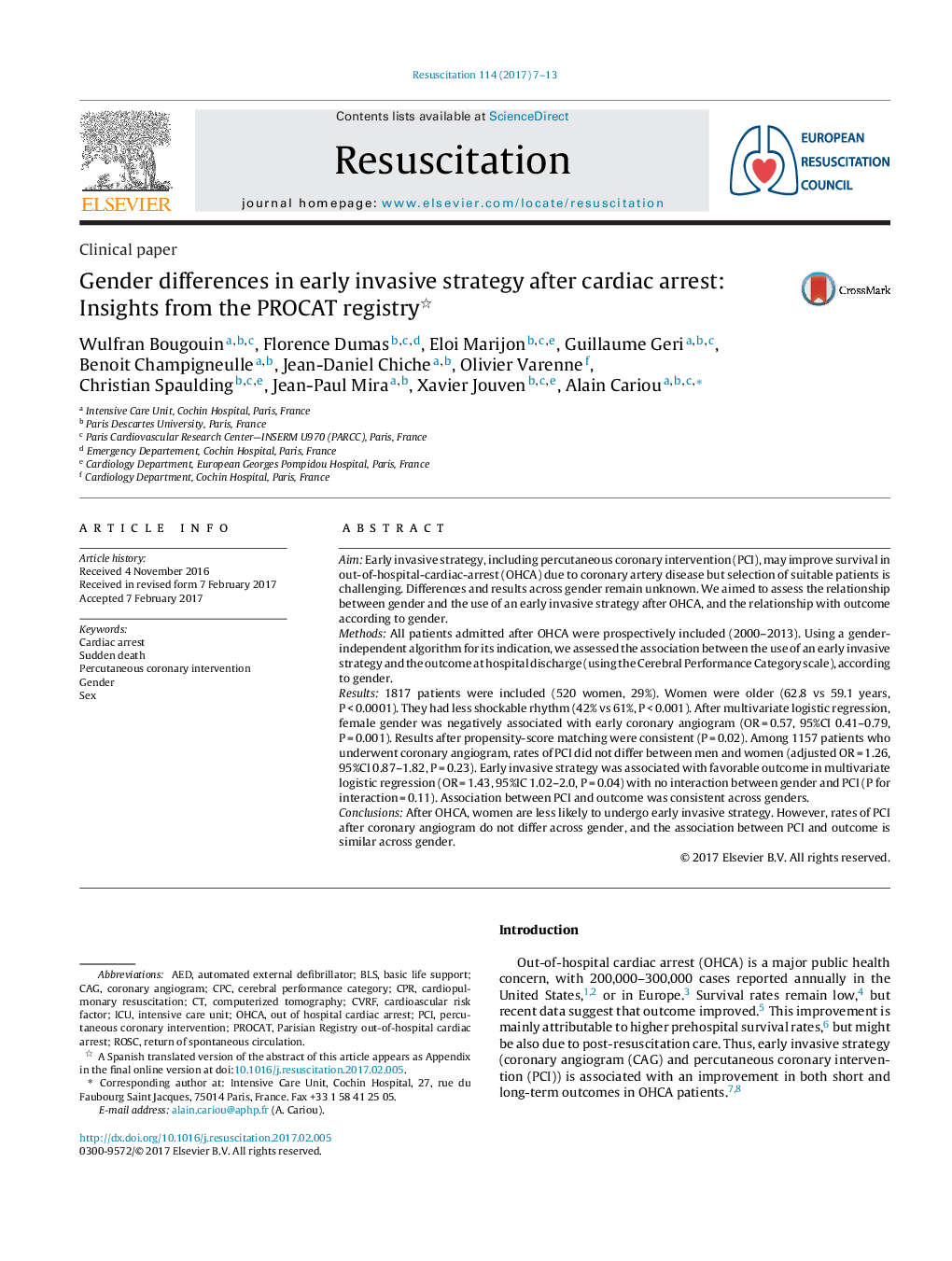| Article ID | Journal | Published Year | Pages | File Type |
|---|---|---|---|---|
| 5619993 | Resuscitation | 2017 | 7 Pages |
AimEarly invasive strategy, including percutaneous coronary intervention (PCI), may improve survival in out-of-hospital-cardiac-arrest (OHCA) due to coronary artery disease but selection of suitable patients is challenging. Differences and results across gender remain unknown. We aimed to assess the relationship between gender and the use of an early invasive strategy after OHCA, and the relationship with outcome according to gender.MethodsAll patients admitted after OHCA were prospectively included (2000-2013). Using a gender-independent algorithm for its indication, we assessed the association between the use of an early invasive strategy and the outcome at hospital discharge (using the Cerebral Performance Category scale), according to gender.Results1817 patients were included (520 women, 29%). Women were older (62.8 vs 59.1 years, P < 0.0001). They had less shockable rhythm (42% vs 61%, P < 0.001). After multivariate logistic regression, female gender was negatively associated with early coronary angiogram (OR = 0.57, 95%CI 0.41-0.79, P = 0.001). Results after propensity-score matching were consistent (P = 0.02). Among 1157 patients who underwent coronary angiogram, rates of PCI did not differ between men and women (adjusted OR = 1.26, 95%CI 0.87-1.82, P = 0.23). Early invasive strategy was associated with favorable outcome in multivariate logistic regression (OR = 1.43, 95%IC 1.02-2.0, P = 0.04) with no interaction between gender and PCI (P for interaction = 0.11). Association between PCI and outcome was consistent across genders.ConclusionsAfter OHCA, women are less likely to undergo early invasive strategy. However, rates of PCI after coronary angiogram do not differ across gender, and the association between PCI and outcome is similar across gender.
